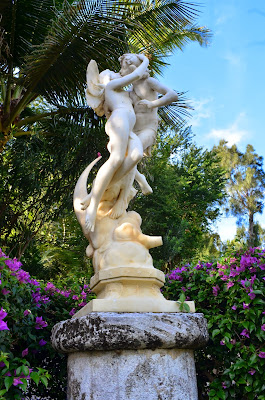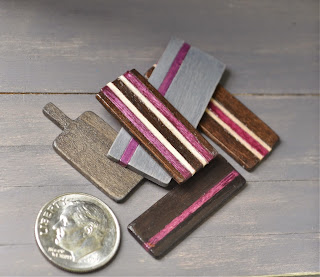

Hey everyone! It has been 10 days and I have 10 miniatures finished, YAY! I had a bunch of chrysnbon kits that I had purchased from
Oakridge Hobbies (they were the best priced that I found in the US although they have a tendency to be back ordered a bunch). I also recently purchased some do-it-yourself book kits from
Angelika's Minis on Etsy. I don't have a whole lot of experience with miniature kits and figured I would give them a whirl. Hope you like them as much as I loved making them!


For this and all of the other plastic Chrysnbon kits I cannot stress enough the importance of trimming and scraping off the excess plastic. Unfortunately there are a lot of fake looking seam line from the molding process but I couldn't really complain since I think I spent maybe $6 at the most on each kit with the exception of the stove which I believe was around $12. I used fine 400, 600, and 1000 grit sand paper to try and remedy this. Also getting a putty filling compound especially for polystyrene is recommended, I didn't have any on hand and used an epoxy putty I had but it barely worked. It did not adhere well at all to the polystyrene but luckily filled in some of the little gaps.
 |
|

To try and make the texture that cast iron has instead of using a flat black spray paint or just aging the already black plastic I decided to use a fine textured black spray paint. I really like how it turned out. One thing I did not like about the stove kit was how fake the plated metal application is for this kit. I used a flat black spray paint on this and used Amaco rub and buff spanish copper, pewter, and silver leaf for some of the metal detail work. I buffed it out and it was a little to shiny for my taste I wanted the stove to be slightly antiqued and worn, so I used an acrylic wash with lamp black and let it sit a minute before wiping it off so it would get into the crevices. I also did this with the edges of the shelves and everywhere I used Amaco rub and buff.
 |
| Chrysnbon Stove Completed |
*Some things I would have done differently would have been to not spray paint the glue edges of the individual pieces. I had a heck of a time getting some of the pieces to glue properly and had to re-scrape these edges with an exacto knife and etch them a little bit to get the polystyrene testers glue to adhere, and even then there are places on it that the bond isn't stiff enough. Another thing I would have done differently is to glue the legs and the base board where the legs peg into together at the same time instead of separately. I had to break off all of the legs to get them to line up together.
 |
| Before aging right, after aging left |
 |
Completed Chairs
|
The chairs turned out better than I had hoped. Working with plastic definitely had its difficult moments, I struggled painting the grey chairs with regular acrylic washes and in the end gave up because the acrylic would not adhere properly. I started over by washing the chairs with soapy water. I then spray painted them with a grey spray paint specifically for plastic and then aged them with a light grey acrylic wash and a dark brown acrylic wash because it was a little too cold otherwise.
 |
| Close up of modifications |
I separated the bathing kit into two groups and spray painted the pitcher, bowl, and "chamber pot" a vanilla and used a gloss varnish to make it look more like ceramic. I spray painted the straight razor soap dish, frothing mug, and shaving bristle brush with a flat black spray paint and then used the gloss varnish to enhance them. I used the Amaco rub 'n' buff on the straight razor and aged it a little bit with a black acrylic wash. It is a little hard to tell in the pictures but I modified the frothing cup to have a brush rest on it like most did in the late eighteen hundreds by melting extra polystyrene and gluing it on before painting. I also wanted a more realistic shaving brush so I cut off the fake plastic bristles and added real bristles instead.
I was impressed by how good of quality the printies I bought from Angelika's Minis were. They were only $3.50 + shipping each and I love how they turned out. I did do some modifications to the pages before I started putting it all together. I used an archival flat varnish and sprayed all of the pages before I started cutting and assembling to add strength and protect the ink from being handled. I also used an archival bookbinding glue and used clamps and pieces of wood to make a makeshift mini book press to make sure all the pages were tight and glued well. I strengthened the covers by adding some thin card stock before gluing in the pages, I also added some silk book ends I made to make them a little more detailed and elegant.
 |
| Close up of silk book ending added |
 |
| Size reference |


















































